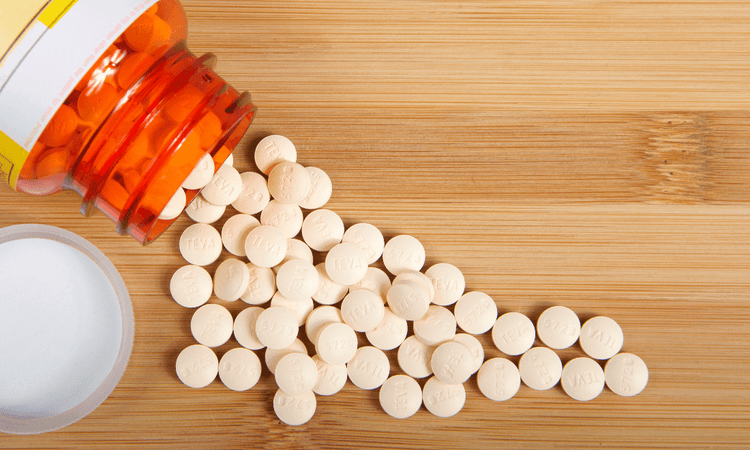
Related products
Famotidine – What is it?
Famotidine is used to treat gastric and duodenal ulcers, erosive oesophagitis, and gastro-oesophageal reflux disease (GERD). The regurgitation of stomach acid characterises gastro-oesophageal reflux disease (GERD) into the oesophagus. It is further used to manage disorders characterised by excessive gastric acid production (Zollinger-Ellison syndrome, multiple endocrine neoplasia).
Famotidine belongs to a class of medications known as histamine H2 receptor antagonists or H2 blockers. It reduces the quantity of acid produced by the stomach.
It may be acquired with or without a physician's prescription. Each pill in the prescription type has a higher dosage of medication. The specific directions about an individual's medical condition will also be with the physician. This product is offered in the following dose forms:
- Powder for Suspension
- Tablet
Common Brand Name(S): Pepcid, Heartburn Relief, Pepcid AC, Zantac, Pepcid AC Maximum Strength, Zantac 360
When is the Best Time to take Famotidine?
The time required to take famotidine varies by the condition it is treating. If a person takes prescription-strength famotidine, the provider will tell him when to take the medicine.
The recommendation is to take famotidine 30 to 60 minutes before a meal for occasional heartburn. Babak Firoozi, MD, board-certified gastroenterologist, MemorialCare Orange Coast Medical Centre, Fountain Valley, CA: 'I'd say it's best to take it before breakfast.' This lets the medication reduce stomach acid before stomach acid gets released to help digest your first meal of the day.
Most people take two doses daily: one in the morning and one at bedtime to treat stomach ulcers and GERD. Famotidine can be taken any time a person has occasional heartburn symptoms.
Conditions for which a clinician might prescribe famotidine include the following:
1. Peptic ulcers:
There are two types of peptic ulcers: Sores formed on the stomach lining are called gastric ulcers, and sores formed in the duodenum (which connects the small intestine to the stomach) are called duodenal ulcers. The studies in clinical trials of famotidine (40mg) taken at a single bedtime dose effectively reduce gastric acidity in patients with duodenal ulcers. The drug shows a high antisecretory action, keeping intragastric pH above 4 for over half of a 24-hour monitoring period. It's a lasting effect that lasts approximately 12 hours, covering the day when wild-caught animals require coverage. These results confirm the potency of famotidine as a long-acting H2 receptor antagonist and assess its value for correcting acidifying duodenogastric reflux during the night and morning hours.
When a patient has a peptic ulcer, a healthcare professional recommends famotidine once a day before bed or a smaller dose twice daily—one dose in the morning and one at night.
2. Gastroesophageal reflux disease:
Gastroesophageal reflux disease or Acid reflux, occurs when stomach acid flows upward into the oesophagus. Symptoms tend to occur at night when a person is asleep or reclined.
In most cases, a healthcare professional will tell the person to take famotidine twice daily — just before bedtime and in the morning.
3. Hypersecretory conditions:
Conditions which cause excessive acid production include hypersecretory conditions, such as Zollinger-Ellison syndrome. Famotidine is taken every 6 hours (up to four times daily) to treat these conditions.
Why take Famotidine at Night?
If a person takes one dose of famotidine daily, it is usually advised to take it at least one hour before the evening meal or before bed. Gastrointestinal reflux is more likely to occur at night, and up to 79 per cent of those with GERD experience nighttime effects. When unmanaged, these symptoms can result in cardiac symptoms that awaken a person at night from heartburn and indigestion.
Does Famotidine Work Quickly?
Famotidine comes in various forms and strengths, including:
Oral suspension: 10 mg, 20 mg and 40 mg oral tablets
Intravenous solution: The oral forms of the medication reduce stomach acid secretion in the mouth in about one hour and reach their maximum effect in about 1 to 3 hours. The time-to-peak effect is 30 minutes for the intravenous form. "Both acute and preventive treatment is effective because the duration of action of this medication can be up to 12 hours," said Sazan Sylejmani, Pharm.D., owner and manager of Westmont Pharmacy.
What are the Various Modes of Taking Famotidine?
1. Administration of Medication
It should be taken by mouth, with or without food, as directed by a doctor, usually once or twice daily. It is taken before bedtime if it is meant to be once daily.
2. Dosage and Duration
The dosage and duration of treatment vary with the individual's particular medical condition and treatment response. The dosage for children is also decided according to weight. This treatment can be taken with other medications, called antacids if indicated by a healthcare provider. One must obey the doctor’s instructions or else. Questions about its use should be referred to a doctor or pharmacist.
3. Consistency and Timing
For the best outcomes, medicine must be taken consistently. To enhance the likelihood of remembering, it is advisable to maintain a consistent schedule by taking it at the same time or times each day. The healing of ulcers may be delayed if the drug is taken more frequently than recommended if the dosage is increased, or if it is discontinued entirely unless directed by a doctor.
4. Nonprescription Use
For self-treatment of heartburn or acid reflux, use one nonprescription famotidine tablet orally with a glass of water. To avoid heartburn:
- Before consuming any food or liquids that may induce heartburn, take one tablet of water 15 to 60 minutes beforehand.
- Do not use the drug for more than 14 days straight without first talking to your doctor.
What Should Not be Taken with Famotidine?
Famotidine works against certain medications that need an acidic stomach to reach the place where they work, such as the stomach or small intestine. Zanaflex (tizanidine), a skeletal muscle relaxant, should not be taken with famotidine. In addition, tizanidine is increased 3 to 5 fold in blood levels due to mild inhibition of the drug metabolism enzyme CYP1A2 by Famotidine. This can lead to side effects such as dizziness or drowsiness.
Famotidine interacts with some supplements. For instance, famotidine can upset the proper absorption of magnesium, leading to less-than-normal magnesium levels in the blood.
What are the Side effects of Famotidine?
Headaches are the most common side effect of famotidine in adults. Famotidine can also cause other mild side effects, including:
- Constipation
- Diarrhoea
- Muscle aches
- Dizziness
More severe side effects, such as hives, skin rashes, or difficulty swallowing or breathing, can indicate an allergic reaction. In rare cases, it is advised to stop taking the medication and see a doctor immediately.
Only famotidine is recommended over the counter for 14 days of use. If the symptoms persist after this period or worsen, the person must stop the medication and seek medical advice from a healthcare provider. They should also tell the physician if there is chest pain with heartburn, unexplained weight loss, early satiety, persistent stomach pain, or dizziness.
What are the Various Precautions regarding the use of Famotidine?
If a patient is allergic to famotidine, other H2 blockers (such as ranitidine or cimetidine), or other medications, they should disclose this information to their physician or chemist. An allergic response or other issues with this product might be caused by inactive substances. For more information, it is essential to speak with a chemist. People should tell their doctor or pharmacist before using this medication if they have any immune system (such as anaemia), liver (such as problems with many tiny blood vessels in the liver) or lung problems or other stomach problems.
Some of these symptoms may be signs of severe conditions. If you have heartburn with sweating, light-headedness, dizziness, or jaw, chest, arm, or shoulder pain, seek medical help immediately.
Before self-treating with this medication, individuals should also seek medical help right away if they experience any of the following signs of a severe condition:
- vomit that looked like coffee grounds
- blood in vomit
- difficulty swallowing food
- blood in stools
- heartburn over three months
- frequent chest pain
- nausea or vomiting,
- stomach pain.
People Also Ask
How to Store Famotidine?
Keep this medicine out of children's reach, in its original container, at room temperature, and firmly closed. It should not be kept in the bathroom but rather somewhere cold and dark, away from heat sources and moisture. Providing famotidine in liquid form is not recommended, and any leftover liquid should be discarded after 30 days. Specific procedures should be followed when discarding unnecessary drugs to avoid unintentional poisoning of children, pets, and other people. Medication should never be flushed down the toilet. The best course of action is to use a pharmaceutical take-back program. A chemist or the local garbage/recycling agency may provide information on a take-back program in the area. All prescriptions should be kept out of children's sight and access. Many containers for weekly pill minders and others for eye drops, creams, patches, and inhalers are not child-resistant and are simple for little children to open. Keep all drugs up, out of reach of little children, and never lock the safety caps.
How quickly does famotidine relieve stomach pain?
Famotidine usually begins to relieve stomach pain and reduce the symptoms of acidity within 30 to 50 minutes after taking the dose. The full effects of famotidine peaks in about 1 to 3 hours.
Conclusion
Famotidine belongs to a class of medications known as histamine H2 receptor antagonists or H2 blockers that reduces the quantity of acid produced by the stomach. Famotidine is used to treat gastric and duodenal ulcers, erosive oesophagitis, and gastro-oesophageal reflux disease. The regurgitation of stomach acid characterises gastro-oesophageal reflux disease into the oesophagus. Conditions for which a clinician might prescribe famotidine include peptic ulcers, gastroesophageal reflux disease and hypersecretory conditions.
The recommendation is to take famotidine 30 to 60 minutes before a meal for occasional heartburn. Most people take two doses daily: one in the morning and one at bedtime to treat stomach ulcers and GERD. If a person takes one dose of famotidine daily, it is usually advised to take it at least one hour before the evening meal or before bed. Gastrointestinal reflux is more likely to occur at night, and up to 79 per cent of those with GERD experience nighttime effects. Tizanidine, a muscle relaxant, reduces the effects of famotidine and must not be taken along with it. Famotidine also reduces the absorption of magnesium supplements and cause deficient serum magnesium levels even when taking oral magnesium supplements.



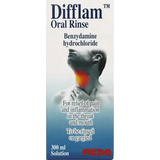









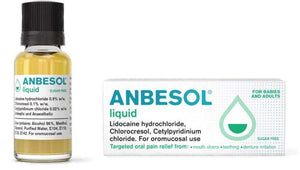



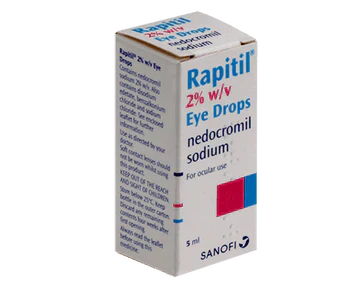



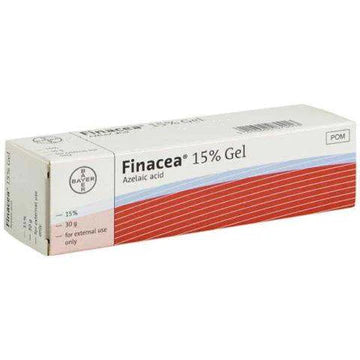
 Rated Excellent by 14,617+ Reviews
Rated Excellent by 14,617+ Reviews